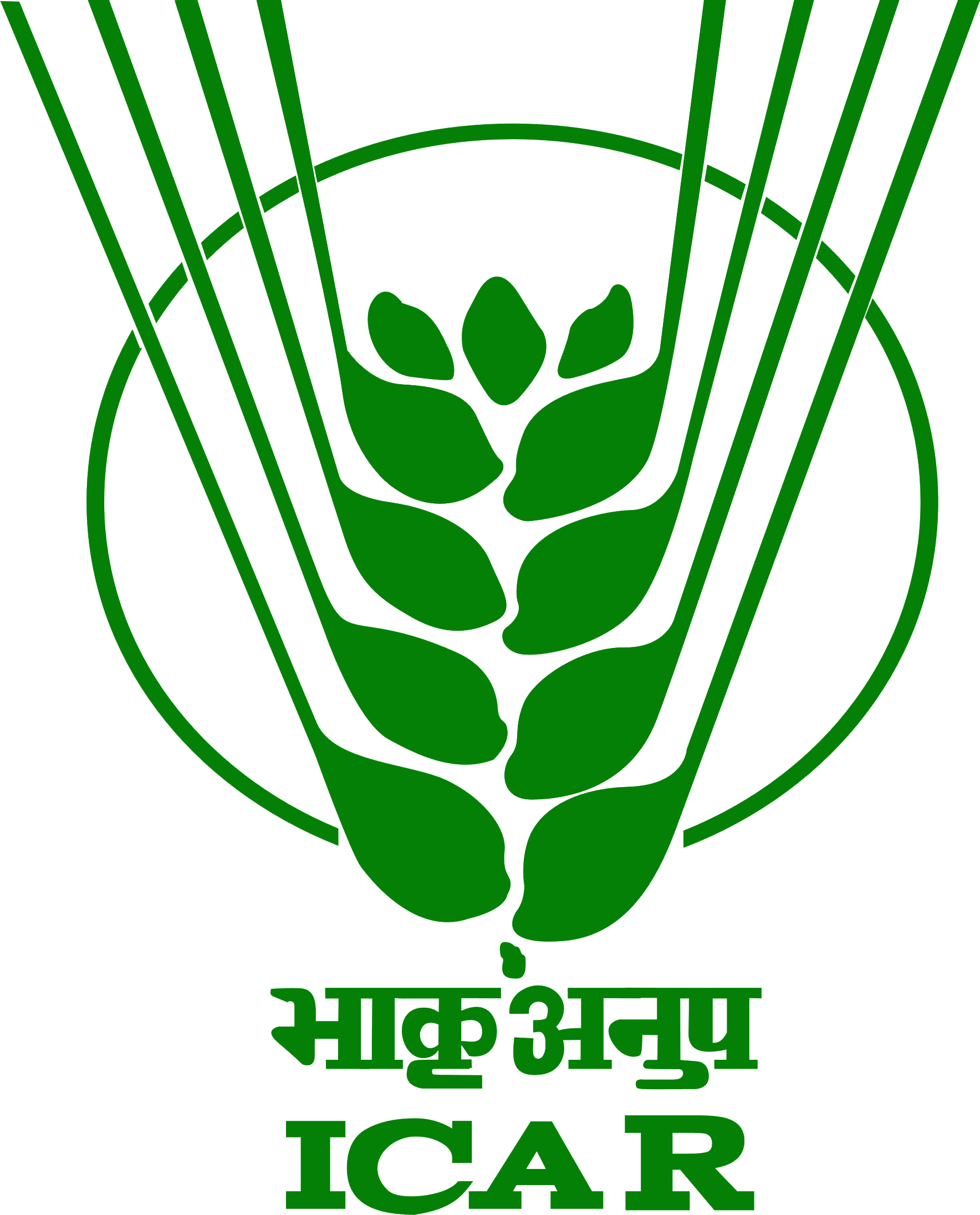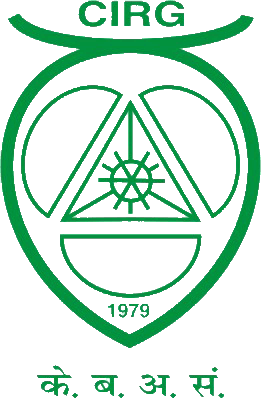



Select Language
|
 |
 |
All India Coordinated Research Project on Goat Improvement |
 |

|
Barbari Unit, CIRG, Makhdoom, Farah, Mathura, Uttar PradeshPrincipal Investigator:Dr. M.K. Singh, Senior Scientist (AG&B) Activity assigned and targets fixed for each activity during the periodObjectivesAs per objectives and technical programme of the project mentioned above. Activity carried out during the periodThe Farm Unit has been maintaining approximately 300 adult breedable does. Presently the goats are undergoing 15-18 generations of intense selection for body weight growth, milk production and fecundity. The data on body weight growth, milk production, reproduction, health aspects are generated. The controlled breeding is followed and goats are breed in two breeding seasons i.e. I. April-June and II. September-November. Data is then subjected to genetic evaluations using appropriate statistical models. The bucks selected are used at the farm and spared to agencies and farmers for breed improvement purpose. The details performance report is as under Flock Statistics The annual flock strength of Barbari goats for the year 2013-14 has been presented in Table 1. In total 690 Barbari goats consisting of 443 adult females and 247 bucks, out of which adult population were 272 were available under breed improvement programme on 1-4-2014. Two hundred twenty One (221) genetically superior, does and bucks were sold for grading up, conservation and genetic improvement of farmers flock during the year 2013-14. In all 327 kids were born at the farm during the year. Overall mortality was 8.25%. At the end of the financial year a total of 690 goats were available. At present 278 females and 80 males were available for selection. The population growth during the year was 147%.
Body WeightThe overall least squares mean for body weight at birth, 3, 6, 9 and 12 months of ages during the year 2013-14 were 1.77±0.01, 7.63±0.06, 11.21±0.10, 15.71±0.17 and 19.16±0.20 kg respectively. The respective body weight during the year 2012-13 born kids completing performance in the year under report were 1.75±0.02, 7.27±0.09, 11.55±0.26, 14.81±0.38 and 18.19±0.65 kg respectively. The single born kids were significantly heavier than twins or triplets up to 9 months of age (Table 2). Kids born during autumn season have attained significantly higher body weight at 6, 9 and 12 months of ages. Single born kids were significantly heavier than those born as multiple. Similarly males were heavier than their counterpart’s right from birth to 12 months of ages. Table 2: Least Squares Means of Body weights in Barbari goats
Milk ProductionThe lactation performance data was analysed from 2009 to 2013 for non-genetic effects i.e. year, season, type of kidding, parity and polynomial regression of weight of dam at kidding using mixed model least square techniques through LSMLMWPC2 programme. The overall least squares means for 90 and 140 days total lactation yield and lactation length for the does kidded in 2013-14 were 58.10, 81.78, 69.67 liters and 132 days, respectively (Table 3). The milk production performance was significantly higher for the year 2013-14. Does kidded during spring season showed significantly higher milk for 90, 140 days milk yield, lactation yield, and lactation length than those which kidded in autumn season. Ninety days milk yield increases up to 3rd lactation then remained highest in 4th and 5th parity thereafter declined with the advancement of parity order.
Table 4: Total Milk Production 2010–2014
ReproductionThe Overall mean for age and weight first mating, age and weight after first kidding, kidding interval and gestation period were 354.7±6.4 days, 15.01±2.3 kg, 422.3±5.2 days, 16.01±2.3 kg, 221.04±7.2 days and 145.4±1.4 days respectively. Low kidding interval is attributed to rebreeding of as more than 40% females kidded during the same year. Tupping%, breeding efficiency on the basis of does available, kidding % (tupped goat), goat produced multiple birth, and litter size was 86.8, 90.7%, 145.3%, 56.4% and 1.6, respectively (Table 5).
Selection DifferentialThe selection differential for 9 months body weight was 5.47 kg and that of the dam’s 90 days milk yield was 7.09 liters. The high selection differential indicates the further scope of improvement through selective breeding in these goats. Ranking of bucksThe BLUP estimates of breeding values for all animals were estimated using animal model and ASREML programme. A part list of BLUP values for 90 days part time milk yield. It can be seen that few goats were having very high BLUP estimates indicating their genetic superiority over others. Health control measures and mortalityHealth control measures were practiced as per the standard prescribed by Goat Health Division of the Institute. Deworming and drenching, vaccination for FMD, ET, PPR and dipping to control ecto-parasite were practiced as per schedule and requirement. Diarrhoea/enteritis was major diseases particularly in kids. The overall Mortality was 3.5% during the report year. Validation of TechnologyThe superior and true to breed goats were sold to various agencies for breed improvement. The number of goats sold is depicted in Table 1.6. The preferences were given to state government agencies.
Revenue GenerationDuring the financial year 2013-14 the Unit generated resources inclusive of live goats sold, milk produced, skin etc worth Rs. 13.40 lakhs. Gaps/constraints/shortfalls / excess and reasons thereof, if anyThe adoptions of farmers are at slow speed. Fund utilization has been a great constraint for this Unit. The total fund allocation as per BE was Rs 19.5 lakh. Since the Unit failed to utilised major chunk of fund, it was drastically reduced to in first RE, even then unit was not able to utilised as per RE, therefore revised RE was prepared of Rs 6.25 lakh sanctioned. Total fund utilization was. Rs 4.65 lakh only. The vehicle facility and staff was other great concern for the unit PC’s evaluation: Very Good (A); Good (B); poor (C)------------------Good (B) ----------------- Future programme identifying the activities, timeline and targets for each of the activityThe Unit has been based on close farm based goat population being maintained in semi-intensive system of management. Following targets are laid down for this Unit.
RemarksBecause of extremely poor fund utilization the unit was rated as good. | |||||||||||||||||||||||||||||||||||||||||||||||||||||||||||||||||||||||||||||||||||||||||||||||||||||||||||||||||||||||||||||||||||||||||||||||||||||||||||||||||||||||||||||||||||||||||||||||||||||||
All India Coordinated Research Project on Goat Improvement Copyright © 2017 PC Unit, ICAR - CIRG, All rights reserved |
Visitor number: 49797 Developed by Shantanu Singh
Last Modified: 07 Apr 2019 |